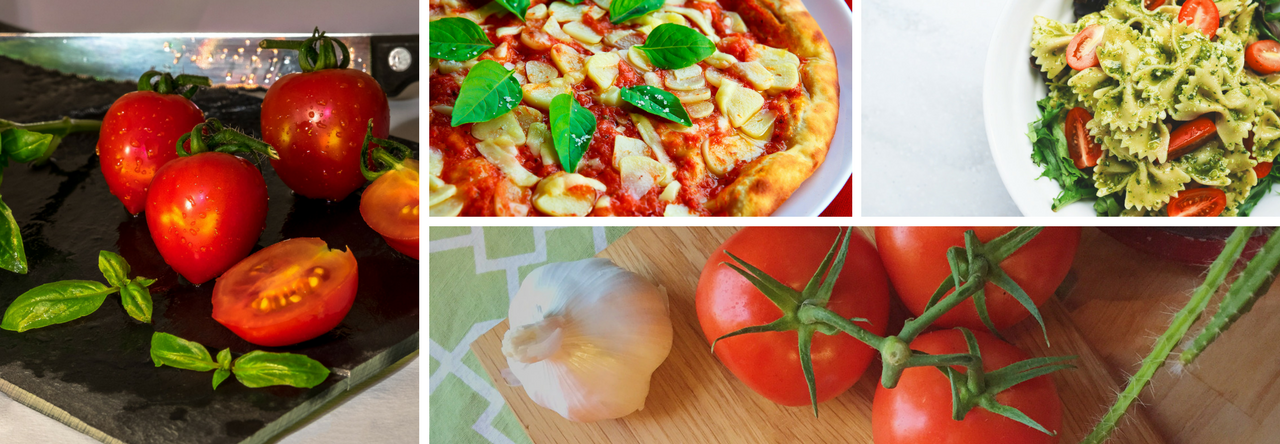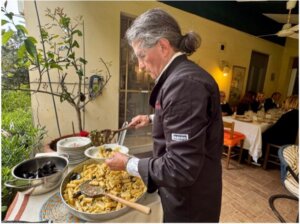As fall approaches I have recently been experimenting with hearty, delicious dishes that pair with polenta. After exploring a number of recipes online, I decided on a very simple combination of ingredients: sausage, pork ribs, onions, and canned tomatoes.
It is very easy to make polenta. There are 2 types I recommend: Bramata and “instant” polenta. The former is firmer and takes about 45 minutes to cook, and I like it better. Instant polenta is still good, but it is less firm and takes about 8 minutes to cook.
Ingredients
For the Ragu:
- 4 lbs. pork ribs.
- 4 – 5 Italian sausages sliced in medallions.
- 1 cup of white wine, preferably a pinot grigio.
- 1 medium red onion, chopped.
- 1 and ½ boxes of Pomï chopped tomatoes (this is about 40 ounces, or 1500 grams)
- 2 cloves garlic, peeled and smashed.
- ½ cup extra-virgin olive oil.
- 1 handful of fresh Italian parsley (flat-leaf), minced.
- a handful of fresh sweet basil leaves, for serving.
- 1 – 2 Calabrian red peppers, minced. (You can buy Calabrian red peppers on Amazon, but if you don’t have them, use Thai or any other spicy red pepper you have on hand).
- ½ cup freshly grated Pecorino cheese. You can also use Parmigiano, but I prefer the sharper, saltier flavor of Pecorino. Both are great.
- Salt and pepper to taste.
Note: This recipe for ragu serves 8 people. If you have four people, use 250 grams of polenta and save the rest of the ragu to be used as a pasta sauce.
For the Polenta:
- 250 grams of polenta for 4 people; 500 grams of polenta for 8 people.
- Water in a ratio of 4 to 1 (1000 ml of water for 250 grams of polenta; 2000 ml of water for 500 grams of polenta)
- Salt to taste.
Preparation
Preparing the Ragu
- In a large pot (cast-iron or enamel pot best), combine the ribs, chopped sausages, 2 cloves of smashed garlic, the hot pepper, and olive oil to cover by about ¼ inch. Brown the meat on one side, about 3-4 minutes.
- When you turn the meat over, add the chopped onion and the handful of minced parsley, and let it saute another 3-4 minutes.
- Add 1 cup of white wine. Turn down the heat to medium and allow the alcohol to evaporate.
- Add the 1 and ½ boxes of Pomï tomatoes to the pot, then add salt and pepper. Stir well.
- Cover, and allow to cook on simmer/low heat for 3 – 4 hours.
- Remove the cover and stir. Allow some liquid to evaporate by continuing to cook on low/simmer to allow the liquid to reduce.
- Add a handful of fresh basil leaves about 15 minutes before you turn off the heat.
Preparing the Polenta
Both the Bramata and the instant polenta are prepared in the same way.
- 500 grams of polenta, which you will let slowly fall into 2 liters of simmering water with one handful of salt in a pot. The best pot is a Paiolo pan, which made of copper and has a wooden handle. As the polenta falls in the water, mix with a whisk. Keep mixing for a minute or two.
- Lower the heat, making sure the water does not boil, and keep mixing for a minute or two –lower the heat, be sure the water does not boil, then use a wooden spoon to continue to mix the water with the polenta,.
- Once the polenta falls from the side of the pot and becomes a ball in the center of the pot, it is ready (4
 5 minutes) for the Bramata. For the instant polenta, after 8 minutes it is done, no matter what.
5 minutes) for the Bramata. For the instant polenta, after 8 minutes it is done, no matter what.
Serving the Ragu with the Polenta
- When the polenta is ready, pour it onto a large cutting board or serving dish, shaping it into a circle. Make an indentation in the center of the polenta, then pour the ragu onto the polenta. Add the grated Pecorino cheese and serve.
- Buon appetito!
Suggestion: If you cook the polenta Bramata, be sure to have a friend in the kitchen who can take turns with you mixing the polenta—and yes, you should constantly mix the polenta, this is why lazy people invented the instant polenta!


 5 minutes) for the Bramata. For the instant polenta, after 8 minutes it is done, no matter what.
5 minutes) for the Bramata. For the instant polenta, after 8 minutes it is done, no matter what.